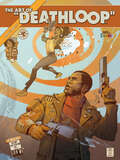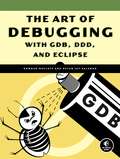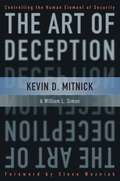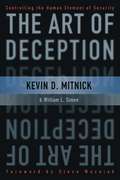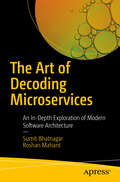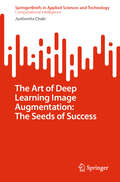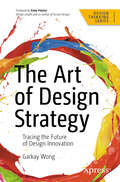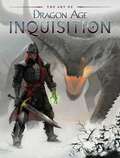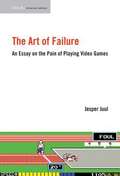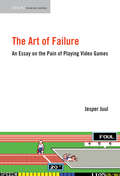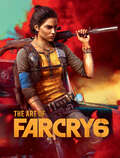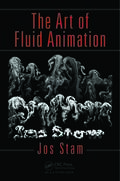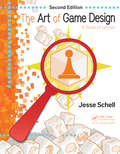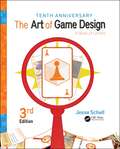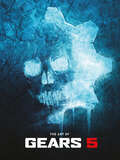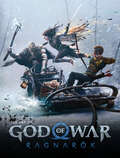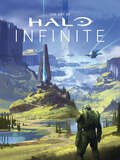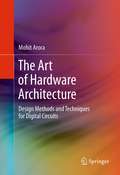- Table View
- List View
The Art of Days Gone
by Bend StudioA masterfully designed book collecting over 200 pages of art and commentary from the creators of the brutal and thrilling Days Gone!Set in the beautiful and rugged landscape of the Pacific Northwest high desert, a global pandemic has wreaked havoc on everyone and everything in sight. Now, former outlaw biker turned bounty hunter Deacon St. John must fight for survival against all odds. Witness the creation of Deacon's epic adventure with The Art of Days Gone! From Dark Horse Books and Bend Studio (Syphon Filter, Resistance: Retribution, Uncharted: Golden Abyss), The Art of Days Gone takes an unflinching look at the lovingly detailed production of this hugely anticipated game, featuring hundreds of pieces of concept art and exclusive commentary directly from the team who created it!
The Art of Dead Island 2
by Alex CalvinI Love HELL-A!This gory volume is dripping with insights showing just how the video game world of Dead Island 2 came to life!Featuring never before seen concept art on each of the Slayers, their gear and weapons, the ruined and iconic streets of post-outbreak Los Angeles, and the shambling hordes of dangerous undead that call them home! Also, this book showcases insights from the creators of the game, with captions and text written by Alex Calvin (Runescape: The First 20 Years).Dark Horse Books, Deep Silver, and Dambuster Studios proudly present: The Art of Dead Island 2!
The Art of Deathloop
by Arkane Studios Bethesda SoftworksA full-color, oversized hardcover that explores the creation of Deathloop, the groundbreaking first-person shooter from Arkane Studios and Bethesda Softworks. Winner of Best Game Direction and Best Art Direction in the 2021 Game Awards!In The Art of Deathloop, Dark Horse Books takes readers inside the latest critically acclaimed title from the creators of Dishonored and Prey. The mysterious island of Blackreef comes to life through never-before-seen concept art, allowing readers to get up close and personal with all the equipment, adversaries, and locations Colt will encounter while hunting his targets, breaking the island&’s timeloop, and evading the deadly assassin Julianna! The experience is deepened with the inclusion of select 3D imagery and an exclusive pair of retro-styled anaglyphic 3D glasses! Dark Horse Books, Arkane Studios, and Bethesda present The Art of Deathloop—a unique examination of the landmark shooter!
The Art of Debugging with GDB, DDD, and Eclipse: For Professionals And Students
by Norman Matloff Peter Jay SalzmanDebugging is crucial to successful software development, but even many experienced programmers find it challenging. Sophisticated debugging tools are available, yet it may be difficult to determine which features are useful in which situations. The Art of Debugging is your guide to making the debugging process more efficient and effective.The Art of Debugging illustrates the use three of the most popular debugging tools on Linux/Unix platforms: GDB, DDD, and Eclipse. The text-command based GDB (the GNU Project Debugger) is included with most distributions. DDD is a popular GUI front end for GDB, while Eclipse provides a complete integrated development environment.In addition to offering specific advice for debugging with each tool, authors Norm Matloff and Pete Salzman cover general strategies for improving the process of finding and fixing coding errors, including how to:–Inspect variables and data structures–Understand segmentation faults and core dumps–Know why your program crashes or throws exceptions–Use features like catchpoints, convenience variables, and artificial arrays–Avoid common debugging pitfallsReal world examples of coding errors help to clarify the authors’ guiding principles, and coverage of complex topics like thread, client-server, GUI, and parallel programming debugging will make you even more proficient. You'll also learn how to prevent errors in the first place with text editors, compilers, error reporting, and static code checkers.Whether you dread the thought of debugging your programs or simply want to improve your current debugging efforts, you'll find a valuable ally in The Art of Debugging.
The Art of Deception: Controlling the Human Element of Security
by Kevin D. Mitnick William L. SimonInviting you into the complex mind of the hacker, Mitnick provides realistic scenarios of cons, swindles, and social engineering attacks on businesses--and the consequences. Focusing on the human factors involved with information security, Mitnick explains why all the firewalls and encryption protocols in the world will never be enough to stop a savvy grifter intent on rifling a database or an irate employee determined to crash a system. He illustrates just how susceptible even the most locked-down information systems are to a determined con artist impersonating an IRS agent or any other seemingly innocent character. Narrated from the points of view of both the attacker and the victim, The Art of Deception explores why each attack was so successful--and how it could have been averted--in an engaging and highly readable manner reminiscent of a true-crime novel.
The Art of Deception: Controlling the Human Element of Security
by Kevin D. Mitnick William L. Simon Steve WozniakThe world's most infamous hacker offers an insider's view of the low-tech threats to high-tech securityKevin Mitnick's exploits as a cyber-desperado and fugitive form one of the most exhaustive FBI manhunts in history and have spawned dozens of articles, books, films, and documentaries. Since his release from federal prison, in 1998, Mitnick has turned his life around and established himself as one of the most sought-after computer security experts worldwide. Now, in The Art of Deception, the world's most notorious hacker gives new meaning to the old adage, "It takes a thief to catch a thief."Focusing on the human factors involved with information security, Mitnick explains why all the firewalls and encryption protocols in the world will never be enough to stop a savvy grifter intent on rifling a corporate database or an irate employee determined to crash a system. With the help of many fascinating true stories of successful attacks on business and government, he illustrates just how susceptible even the most locked-down information systems are to a slick con artist impersonating an IRS agent. Narrating from the points of view of both the attacker and the victims, he explains why each attack was so successful and how it could have been prevented in an engaging and highly readable style reminiscent of a true-crime novel. And, perhaps most importantly, Mitnick offers advice for preventing these types of social engineering hacks through security protocols, training programs, and manuals that address the human element of security.
The Art of Decoding Microservices: An In-Depth Exploration of Modern Software Architecture
by Sumit Bhatnagar Roshan MahantStay competitive in today’s software industry by mastering microservices. As microservices architecture becomes the modern standard, this book demystifies the transition from monoliths to microservices with clear guidance and practical examples for easier adoption and implementation. The book starts with the basics, explaining what microservices are, their benefits, and how they compare to monolithic architectures. From there, you will explore a wide range of topics including service discovery, load balancing, authentication and authorization, resilience, fault tolerance, and much more as well as practical Java examples throughout. Each chapter is meticulously crafted to offer a balance of theory and hands-on application, ensuring you not only understand the concepts but also apply them effectively in real-world scenarios. By the end of the book, you will be ready to design, implement, and manage scalable and efficient microservices-based systems. Additionally, you will gain a forward-looking perspective on emerging trends and the integration of microservices in AI and IoT. What You Will Learn Compare microservices and monolithic systems, understanding the basics, benefits and key differences Understand key principles for decomposing monoliths and designing for failure Master synchronous vs. asynchronous communication and when to use each Explore containerization, orchestration with Kubernetes, and scaling strategies Secure microservices and monitor health and performance in distributed systems Who This Book Is For Novice and experienced developers who are new to microservices and want to master the topic to drive successful software projects. The book is programming language-agnostic, and can be understood by developers of any language, but those with some familiarity with Java will benefit more from the specific examples provided.
The Art of Deep Learning Image Augmentation: The Seeds of Success (SpringerBriefs in Applied Sciences and Technology)
by Jyotismita ChakiThis book addresses the critical challenge of limited training data in deep learning for computer vision by exploring and evaluating various image augmentation techniques, with a particular emphasis on deep learning-based methods. Chapter 1 establishes the core problem of data scarcity, outlining its negative impacts on model performance, and introduces traditional image augmentation techniques like geometric transformations, color space manipulations, and other methods such as noise injection. It highlights the limitations of these traditional approaches, including limited variation, lack of control, and inability to introduce new information, before introducing the advantages of deep learning-based augmentation, such as superior control, task adaptability, enhanced realism, and automation. Chapter 2 delves into GAN-based image augmentation, discussing how GANs generate realistic synthetic images for various applications like super-resolution and image-to-image translation, while also addressing the challenges associated with GAN training and potential future directions. Chapter 3 explores autoencoder-based image augmentation, covering techniques like VAEs, DAEs, and AAEs, and highlighting architectural considerations and challenges such as overfitting. Chapter 4 showcases the diverse applications of deep learning-based image augmentation and how it enhances various computer vision tasks by improving generalization, robustness, and accuracy. Chapter 5 discusses strategies for evaluating and optimizing deep learning image augmentation, including traditional metrics, image quality metrics, and hyperparameter tuning techniques. Finally, Chapter 6 explores cutting-edge advancements, covering AutoAugment, interpretable augmentation, attention-based augmentation, counterfactual augmentation, and human-in-the-loop augmentation, emphasizing the role of human expertise in creating high-quality augmented data.
The Art of Design Strategy: Tracing the Future of Design Innovation (Design Thinking)
by Garkay WongAlthough business leaders and designers may appear to have different objectives, they actually share a common goal: ensuring the long-term success and profitability of their organization. This book highlights the shared objective, examining the progression of Design Strategy to bridge the gap between design practice and executive decision-making. Featuring the TRACES framework, it aligns design initiatives with overarching business goals, enhancing design-led strategies. The topic is a timely one. A recent article published by FastCompany has touched a nerve among design leaders, highlighting the urgent challenges and anxieties they face about the future of design. It’s sparked a conversation on the need for a new direction within the industry. As we stand on the precipice of the next design shift and design leaders ponder their next steps, The Art of Design Strategy offers a much-needed perspective, providing insights on how to elevate design to a strategic level and secure its place at the heart of business innovation. What You’ll Learn Understand the key principles of design strategy and management. Build a design-led work culture within your organization. Examine the TRACES framework to align design initiatives with your business goals. Gain deeper insights of the future landscape of the design industry. Who This book Is For Designers who are interested in design management and its implications, transitioning from design craft to management roles, and managers and design leaders who are looking to understand the strategic value of design in various business areas.
The Art of Destiny, Volume 3
by Michael OwenImmerse yourself in the stunning, dynamic world of Destiny with never-before-seen art and exclusive interviews from the Bungie team.The Art of Destiny, Volume 3 is a celebration of the stunning, dynamic visual style beloved by Destiny fans. Featuring hundreds of pieces of concept art, the book picks up where the previous volume left off in 2017. It features everything from early sketches and illustrations of characters, to paintings of sweeping vistas used to shape the in-game worlds. With stunning imagery, interviews with the development team, and more, The Art of Destiny, Volume 3 is a must-have for Guardians everywhere! ORIGINAL CONCEPT ART: Includes many never-before-seen concept art of the various Alien tribes, including: the Fallen, the Hive, the Vex, the Cabal, and the Taken. EXCLUSIVE INTERVIEWS: Hear from the development team and creators of Destiny as they delve deeper into the Light and Darkness saga. PEOPLE, PLACES, AND WEAPONS: Experience an in-depth look at the compelling characters, detailed environments, and incredible weaponry that brings the war to save our solar system to life. A STUNNING COMPANION: This exquisitely crafted hardcover book is perfect for all Guardians and fans of Destiny. Complete your collection with this gorgeous third volume in the Art of Destiny series.
The Art of Dragon Age: Inquisition (Dragon Age)
by BiowareThe next generation of fantasy is here! Go behind the scenes of Dragon Age: Inquisition, the most ambitious game ever created by legendary developer BioWare!Featuring hundreds of never-before-seen artworks and captions from the developers themselves, this volume offers revealing insight into the inspiration and creation of every facet of Dragon Age: Inquisition, from the heroes, to the wondrous weapons they wield, the powerful beasts that they battle, and the extraordinary world that they inhabit.
The Art of Engagement Portraits
by Neal UrbanWith bold colors, inventive lighting, creative postproduction, and eye-catching poses, Neal Urban creates engagement portraits that go far beyond the expected. In this book, he takes you behind the scenes with dozens of couples to show you how each image was conceptualized, customized, and brought to life. Under Neal's careful eye, a patch of tall grass in a parking-lot becomes an exotic setting for two, the couple's favorite dive-bar is transformed into a backdrop for timeless romance, and city streets become cinematic wonders. Shooting in the late-afternoon, sunset, and evening hours, Urban works carefully with the natural light, ambient sources in the scene, off-camera flash, LED, and tungsten sources to beautifully sculpt the couple and bring his scenes to life. Spend a few hours perusing this book and you'll never approach engagement photography the same way again!
The Art of Failure
by Jesper JuulWe may think of video games as being "fun," but in The Art of Failure, Jesper Juul claims that this is almost entirely mistaken. When we play video games, our facial expressions are rarely those of happiness or bliss. Instead, we frown, grimace, and shout in frustration as we lose, or die, or fail to advance to the next level. Humans may have a fundamental desire to succeed and feel competent, but game players choose to engage in an activity in which they are nearly certain to fail and feel incompetent. So why do we play video games even though they make us unhappy? Juul examines this paradox. In video games, as in tragic works of art, literature, theater, and cinema, it seems that we want to experience unpleasantness even if we also dislike it. Reader or audience reaction to tragedy is often explained as catharsis, as a purging of negative emotions. But, Juul points out, this doesn't seem to be the case for video game players. Games do not purge us of unpleasant emotions; they produce them in the first place. What, then, does failure in video game playing do? Juul argues that failure in a game is unique in that when you fail in a game, you (not a character) are in some way inadequate. Yet games also motivate us to play more, in order to escape that inadequacy, and the feeling of escaping failure (often by improving skills) is a central enjoyment of games. Games, writes Juul, are the art of failure: the singular art form that sets us up for failure and allows us to experience it and experiment with it. The Art of Failure is essential reading for anyone interested in video games, whether as entertainment, art, or education.
The Art of Failure: An Essay on the Pain of Playing Video Games (Playful Thinking)
by Jesper JuulAn exploration of why we play video games despite the fact that we are almost certain to feel unhappy when we fail at them. We may think of video games as being "fun," but in The Art of Failure, Jesper Juul claims that this is almost entirely mistaken. When we play video games, our facial expressions are rarely those of happiness or bliss. Instead, we frown, grimace, and shout in frustration as we lose, or die, or fail to advance to the next level. Humans may have a fundamental desire to succeed and feel competent, but game players choose to engage in an activity in which they are nearly certain to fail and feel incompetent. So why do we play video games even though they make us unhappy? Juul examines this paradox. In video games, as in tragic works of art, literature, theater, and cinema, it seems that we want to experience unpleasantness even if we also dislike it. Reader or audience reaction to tragedy is often explained as catharsis, as a purging of negative emotions. But, Juul points out, this doesn't seem to be the case for video game players. Games do not purge us of unpleasant emotions; they produce them in the first place. What, then, does failure in video game playing do? Juul argues that failure in a game is unique in that when you fail in a game, you (not a character) are in some way inadequate. Yet games also motivate us to play more, in order to escape that inadequacy, and the feeling of escaping failure (often by improving skills) is a central enjoyment of games. Games, writes Juul, are the art of failure: the singular art form that sets us up for failure and allows us to experience it and experiment with it. The Art of Failure is essential reading for anyone interested in video games, whether as entertainment, art, or education.
The Art of Far Cry 6
by UbisoftExplore the vibrant island of Yara, a nation trapped in time. Dark Horse Books and Ubisoft have joined forces to create The Art of Far Cry 6, a beautiful volume that is perfect for any fan of the Far Cry adventures. Welcome to Yara. Viva Libertad!
The Art of Feature Engineering: Essentials for Machine Learning
by Pablo DuboueWhen machine learning engineers work with data sets, they may find the results aren't as good as they need. Instead of improving the model or collecting more data, they can use the feature engineering process to help improve results by modifying the data's features to better capture the nature of the problem. This practical guide to feature engineering is an essential addition to any data scientist's or machine learning engineer's toolbox, providing new ideas on how to improve the performance of a machine learning solution. Beginning with the basic concepts and techniques, the text builds up to a unique cross-domain approach that spans data on graphs, texts, time series, and images, with fully worked out case studies. Key topics include binning, out-of-fold estimation, feature selection, dimensionality reduction, and encoding variable-length data. The full source code for the case studies is available on a companion website as Python Jupyter notebooks.
The Art of Fire Emblem: Awakening
by VariousThe Art of Fire Emblem Awakening contains an in-depth, behind-the-scenes look at the smash-hit 3DS game, from beautifully illustrated renditions of your favorite characters, to storyboards for in-game events, character designs, weapon designs, character profiles, and the entirety of the script with every possible branch of dialogue! Relive some of the most poignant moments of the game, or see what might have been if you had made different in-game decisions with the Art of Fire Emblem Awakening!
The Art of Fluid Animation
by Jos StamThis book presents techniques for creating fluid-like animations with no required advanced physics and mathematical skills. It describes how to create fluid animations like water, smoke, fire, and explosions through computer code in a fun manner. It includes a historical background of the computation of fluids as well as concepts that drive fluid animations, and also provides computer code that readers can download and run on several platforms to create their own programs using fluid animation.
The Art of Game Design: A Book of Lenses, Second Edition
by Jesse SchellGood game design happens when you view your game from as many perspectives as possible. Written by one of the world's top game designers, The Art of Game Design presents 100+ sets of questions, or different lenses, for viewing a game's design, encompassing diverse fields such as psychology, architecture, music, visual design, film, software enginee
The Art of Game Design: A Book of Lenses, Third Edition
by Jesse SchellThe Art of Game Design guides you through the design process step-by-step, helping you to develop new and innovative games that will be played again and again. It explains the fundamental principles of game design and demonstrates how tactics used in classic board, card and athletic games also work in top-quality video games. Good game design happens when you view your game from as many perspectives as possible, and award-winning author Jesse Schell presents over 100 sets of questions to ask yourself as you build, play and change your game until you finalise your design. This latest third edition includes examples from new VR and AR platforms as well as from modern games such as Uncharted 4 and The Last of Us, Free to Play games, hybrid games, transformational games, and more. Whatever your role in video game development an understanding of the principles of game design will make you better at what you do. For over 10 years this book has provided inspiration and guidance to budding and experienced game designers - helping to make better games faster.
The Art of Gears 5
by The Coalition StudioOver 200 pages of gorgeous art that delves into the characters, settings, and equipment of Gears 5--all collected in a full-color digital tome!Unearth the origins of the Swarm and journey across the war-torn and diverse landscapes of Sera while exploring art from the first Gears game to be headed by Kait Diaz. This bold new chapter in the Gears of War series is examined in fastidious detail, chronicling the development of the action-packed game with art that spans from early concepts to polished renders. Dark Horse Books and The Coalition proudly join to present The Art of Gears 5, diving into the sunken ruins of the ancient Locust horde, and peering at in-depth collections of art from the enthralling world, captivating characters, and distinctive weapons of Gears 5!
The Art of Ghost of Tsushima
by Sucker Punch ProductionsOn sale date subject to change.A beautifully realized tome inspired by traditional Japanese aesthetics and featuring art from the delicately crafted video game from Sucker Punch Productions. Dark Horse Books and Sucker Punch Productions are honored to present The Art of Ghost of Tsushima. Explore a unique and intimate look at the Tsushima Islands--all collected into a gorgeous, ornately designed art book.Step into the role of Tsushima Island's last samurai, instilling fear and fighting back against the Mongolian invasion of Japan in the open-world adventure, Ghost of Tsushima. This volume vividly showcases every detail of the vast and exotic locale, featuring elegant illustrations of dynamic characters, spirited landscapes, and diagrams of Samurai sword-fighting techniques, along with a look at storyboards and renders from the most intense, eloquent, and expressive cinematic moments of the game.
The Art of God of War Ragnarök
by Amy RatcliffeThe god of war himself returns in this brand-new installment to the beloved God of War series. As the threat of Ragnarök grows ever closer, Kratos and Atreus find themselves choosing between the safety of their family and the safety of the realms. This passionately assembled tome details a story of parenthood, destiny, and adventure in the voices of the team that brought it to life. <p><p> Dark Horse Books and Santa Monica Studio join forces to present stunning, never-before-seen concept art of the world, characters, creatures, and artifacts with The Art of God of War Ragnarök. See what adventures await in Midgard and beyond.
The Art of Halo Infinite
by Microsoft 343 IndustriesThe Master Chief is back. The legendary super soldier returns in Halo Infinite. 343 Industries and Microsoft are building the biggest and most visually spectacular Halo yet. Halo Infinite debuts on the Xbox family of consoles, including Xbox Series X, Microsoft's latest and most powerful game console. To take full advantage of its prodigious graphical prowess, 343 Industries built an all-new, next-generation game engine, giving their world-class artists the tools and technology to realize the worlds, war, and wonder of the Halo universe in unprecedented style and fidelity. 343 Industries have given Dark Horse access to the art and artists who've brought Halo Infinite to vibrant, vivid life. It's all here in unparalleled detail, the heroes you've grown to love--the Master Chief, the brave soldiers of the UNSC, as well as the weapons, vehicles, villains and vistas--and of course, the eponymous and magnificent environments of Halo itself. The Art of Halo Infinite also features a brand-new cover from legendary concept artist and Halo Infinite's Art Director, Sparth! Join us as we take you from concept to launch inside the artwork of the most ambitious Halo game to date.
The Art of Hardware Architecture
by Mohit AroraThis book highlights the complex issues, tasks and skills that must be mastered by an IP designer, in order to design an optimized and robust digital circuit to solve a problem. The techniques and methodologies described can serve as a bridge between specifications that are known to the designer and RTL code that is final outcome, reducing significantly the time it takes to convert initial ideas and concepts into right-first-time silicon. Coverage focuses on real problems rather than theoretical concepts, with an emphasis on design techniques across various aspects of chip-design.


